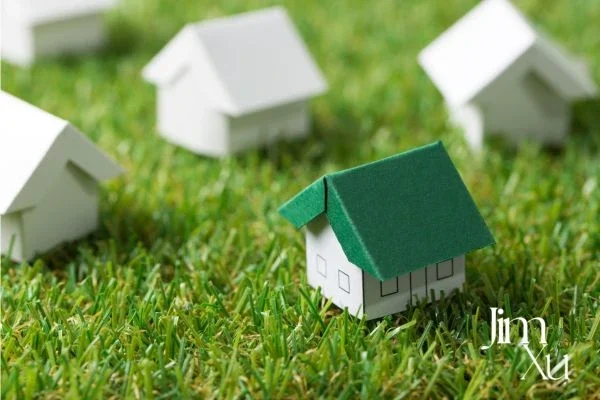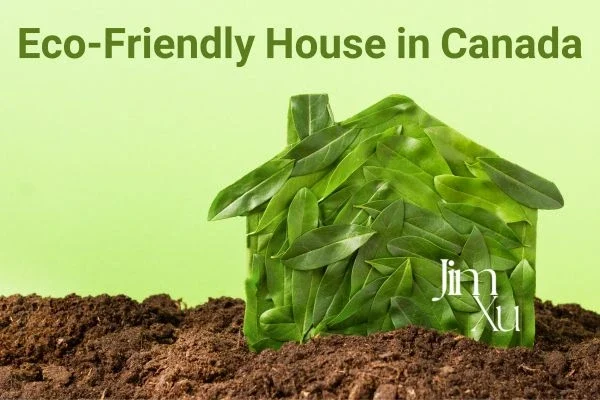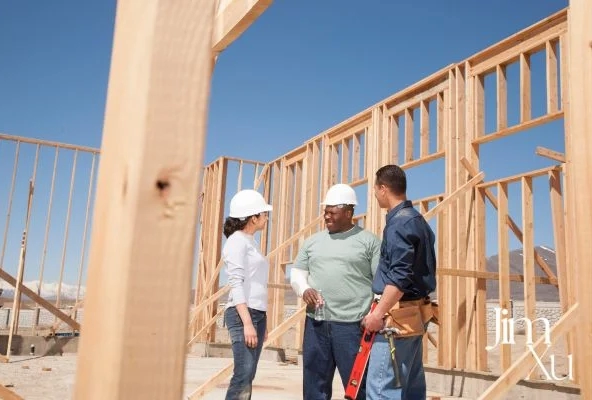Eco-friendly homes are gaining significant attention worldwide as sustainable living becomes crucial in combating climate change and resource depletion. In Canada, with its diverse climate and growing environmental awareness, eco-friendly houses have become a popular choice among homeowners and builders alike. This article explores the defining features of Canadian eco-friendly homes, the benefits of green living, the rising trend of sustainable housing in Canada, and practical steps on how to build an eco-friendly house.
What are Eco-Friendly Homes?
Eco-friendly homes are a combination of technologies and construction methods aimed at reducing negative environmental impacts. These homes typically use renewable energy sources such as solar power, feature advanced insulation, and incorporate water and energy-saving systems. Other characteristics include the use of recycled and natural materials, optimized natural lighting design, and intelligent ventilation systems.

Read more: Elements of a new home
Features in Canadian Eco-Friendly Houses
Eco-friendly homes in Canada incorporate features and technologies that distinguish them from conventional buildings, minimizing energy consumption and environmental impact. Some key features include:
1. Advanced Thermal Insulation: Given Canada’s cold winters, one of the most critical aspects of eco-friendly homes is strong insulation for walls, roofs, and floors. Using high-quality insulation reduces heat loss and maintains indoor warmth, lowering the demand for heating systems.
2. Solar and Renewable Energy Systems: Many green homes in Canada are equipped with rooftop solar panels that generate electricity for household use. Utilizing solar energy reduces electricity costs and decreases greenhouse gas emissions.
3. Environmentally Compatible Building Materials: Construction of these homes involves materials such as certified wood, recycled bricks, and other natural, non-toxic substances. These materials are durable and reduce construction waste and environmental harm.
4. Rainwater Harvesting and Recycling Systems: Systems that collect rainwater for non-potable uses like landscaping irrigation help reduce municipal water consumption and lessen the burden on sewage systems.
5. Optimized Natural Lighting Design: Large windows and thoughtful architectural design maximize natural daylight penetration, reducing the need for artificial lighting during daytime and saving energy.
6. Smart Ventilation and Air Quality Control Systems: Eco-friendly homes typically feature heat recovery ventilation systems that supply fresh air while conserving indoor heat. These systems enhance indoor air quality and prevent external pollutants from entering the home.
These features and modern technologies enable eco-friendly homes to protect the environment while providing comfortable and economical living conditions.
Eco-Friendly Houses in Canada: A Growing Trend
Interest in building and living in eco-friendly homes has grown significantly in recent years in Canada. This trend is driven by factors such as rising energy costs, increased environmental awareness, and government incentives. Federal and provincial governments offer financial support including interest-free loans, tax rebates, and grants for installing renewable energy systems to encourage buyers and builders of green homes.
Additionally, many Canadian construction companies specialize in building homes that meet LEED standards or other green certifications, expanding the market for eco-friendly buildings. Statistics indicate that many new residential projects in major Canadian cities pay close attention to eco-friendly standards, and this movement is rapidly spreading across the country.
Also see: New Westminster apartment

Advantages of Green Homes in Canada
Living in a green home in Canada offers numerous economic, environmental, and lifestyle benefits:
- Significant Energy Cost Savings: Due to advanced insulation, solar energy systems, and efficient appliances, these homes consume on average up to 30% less electricity and gas compared to traditional houses, leading to considerable long-term savings.
- Reduced Environmental Impact: Use of renewable energy and lowered fossil fuel consumption significantly cut greenhouse gas emissions, contributing to climate change mitigation.
- Increased Property Value: Eco-friendly homes typically command higher prices in the real estate market because buyers seek lower maintenance costs and environmentally responsible properties.
- Improved Indoor Air Quality: Use of non-toxic materials and smart ventilation systems ensure fresher, healthier air, especially beneficial for residents with respiratory sensitivities.
- Longer Building Lifespan: Quality materials and thoughtful design increase the durability and lifespan of the home.
Considering these advantages, investing in an eco-friendly house in Canada is an environmentally responsible and financially sound choice.
Read more: How to buy a house in Canada
Traditional vs Eco-Friendly Houses in Canada
The table below highlights the key differences between traditional houses and green homes in Canada in terms of energy consumption, building materials, maintenance costs, and other important features.
| Feature | Traditional Houses | Eco-Friendly Houses |
| Energy Consumption | High, reliant on fossil fuels | Optimized with renewables and insulation |
| Building Materials | Mostly conventional, sometimes harmful | Recycled, natural, and low-impact |
| Maintenance Costs | Higher due to energy use and repairs | Lower with efficient design and technology |
| Indoor Air Quality | Lower, possible presence of toxins | Fresher with smart ventilation |
| Building Lifespan | Average and shorter | Longer with quality materials |
| Environmental Impact | Significant and negative | Minimal and positive |
How to Build an Eco-Friendly House in Canada
Building an eco friendly house in Canada requires following several key steps to ensure environmental sustainability and comfortable and economical living.
- The first step is selecting an appropriate site. The land should have good access to natural resources such as sunlight and water and provide favorable climatic and geographic conditions for energy efficiency. Important considerations include assessing the site’s orientation, climate, and access to infrastructure.
- The second step involves smart building design. The design should prioritize energy efficiency by maximizing natural light, incorporating effective shading systems, and ensuring proper ventilation. Using specialized energy modeling software and consulting with expert architects can optimize the building plans.
- The third step is choosing environmentally compatible building materials. This includes using recycled materials, sustainably certified wood, and products with low carbon footprints. Avoiding toxic and chemical substances also contributes to the health of both residents and the environment.
- The fourth step is installing renewable energy systems such as solar panels, small wind turbines, and geothermal heating systems. It is important to select high-efficiency equipment and ensure reliable after-sales service.
- The fifth step focuses on implementing water and energy conservation systems. Installing rainwater harvesting systems, low-flow fixtures, and energy-efficient appliances, combined with smart consumption control systems, helps minimize resource waste.
- Finally, quality control and certification are essential to verify compliance with international standards such as LEED or Passive House. Conducting energy performance and indoor air quality tests guarantees a healthy and efficient home.
Following these steps results in constructing a home that is not only environmentally friendly but also provides comfort, health, and economic savings for its occupants.
Also see: Vancouver townhomes

Future of Sustainable Living in Canada
The future of sustainable living and eco friendly homes in Canada is very bright and promising. With advancements in modern technologies such as smart homes, advanced energy storage systems, and intelligent energy management, the standards for building and operating green homes are expected to be widely implemented across the country.
Through strong policies and supportive programs, the Canadian government has set ambitious goals for reducing greenhouse gas emissions and increasing the share of renewable energy in the building sector. These efforts not only help preserve the environment but also create new job opportunities in the construction and clean technology industries, guiding the economy towards sustainable living in Canada.
Living in eco-friendly homes is gradually becoming a common and preferred lifestyle that benefits the planet’s health and provides residents with comfort, economic savings, and improved quality of life. Therefore, investing in building and using such homes is not only a responsible choice but also a smart decision for the future, whose positive impacts will remain for generations to come.






